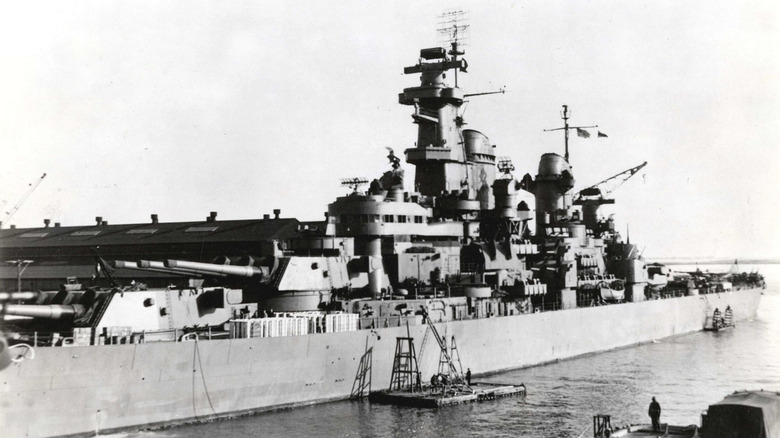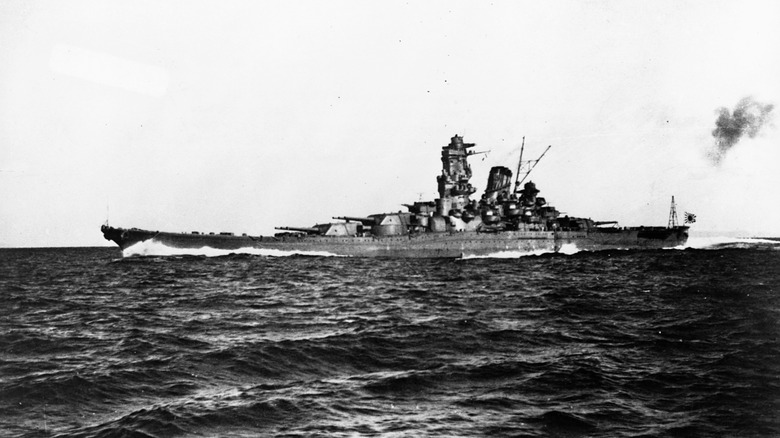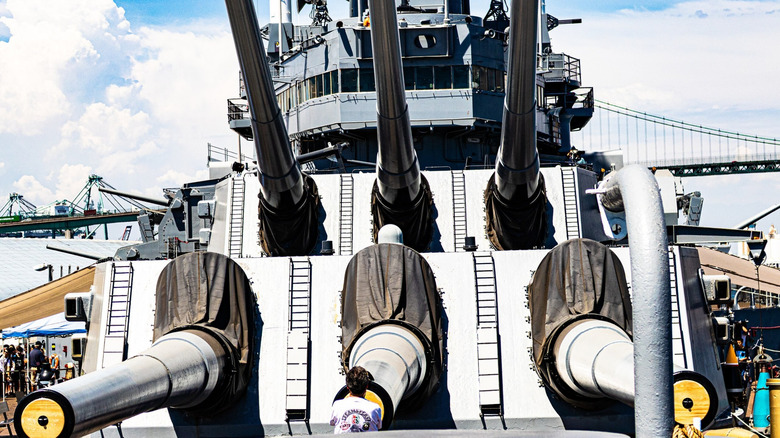USS Illinois: Why The Doomed Iowa-Class Battleship Was Never Deployed
The Iowa class of battleships consists of a quartet of formidable ships: The USS Missouri, New Jersey, Wisconsin, and the namesake Iowa. Conceptually, they were intended as the perfect battleship, packing heavy armor to allow them to withstand attack, potent weaponry, and enough speed to get the best use from both of those assets. Plans to build the proposed fifth ship of the class, the Illinois, started in 1940, with construction beginning two years later.
In the interim, of course, the Japanese Imperial Navy (the formidable nature of which had spurred the United States to bolster its own seagoing forces in the first place) attacked Pearl Harbor in December 1941, causing the U.S. to join the Allies in World War II the very next day. After a year of warfare, construction began on the Illinois and the Kentucky, the proposed fifth and sixth members of the Iowa class. Unfortunately for the Illinois, the year had shown that aircraft carriers were the future of naval warfare.
At the Battle of Midway in June 1942, the United States' aircraft carriers, USS Yorktown, Hornet, and Enterprise destroyed a quartet of Japanese carriers: Hiryu, Kaga, Soryu, and Akagi. It was a decisive victory, and one that showed how carriers would be a dominant force in World War II. This meant that the Illinois would never be deployed, as tactics had changed and carriers were taking center stage.
The fate of the USS Illinois
World War II showed that the U.S. Navy needed to focus on carriers over battleships. This became an increasingly universal sentiment as the war raged on; aircraft carriers' ability to dispatch squadrons of bombers proved deadly to opposing naval forces, as had been seen in no uncertain terms at the Battle of Midway, for one. Battleships were not lacking in firepower, but carriers' aerial firepower offered a versatility that they couldn't match.
A class of six Iowa warships just wasn't what the Navy needed at the time, although the importance of carriers led to speculative plans to convert the under-construction Illinois and Kentucky into carriers. This, too, would have been impractical and costly, although the Navy just wasn't ready to stop the project entirely at first. It was another decade and a half before it recouped what value it could from the unfinished battleship by taking it apart for scrap.
The four completed Iowa-class battleships continued to serve on and off, and it wasn't until the early 1990s that the last one was decommissioned for presumably the final time. The United States doesn't use battleships anymore, but the Iowa class ships, as well as other enormous examples like the Yamato, Japan's biggest battleship ever (pictured here), have an assured and awe-inspiring place in military history. Had the Illinois been completed, it would have been a museum ship as magnificent as any other member of its class.
The US Navy's other Iowa-class ships
Tremendous achievements though they were, the surviving Iowa-class vessels are now all just museum ships, majestic relics at the end of their service lives. It is possible that these U.S. Navy battleships could be recommissioned, but cost concerns and the logistics of doing so make it rather implausible. The Illinois, however, never got to serve at all. Times were changing, and the vast vessel got caught up in the middle. The rise of the aircraft carrier coincided with the decline of the battleship, and the Illinois lost out.
However, this isn't because Iowa-class ships had become obsolete or no longer held value. After all, four ships in the class had been completed and would serve throughout the conflict. They were truly some of the most formidable and capable warships ever built. The USS Iowa, for example, displaced approximately 57,540 tons, had a crew of just over 1,900, and was bristling with guns, including nine 16-inchers.
Despite their intimidating size and strength, these ships were far from slouches. In fact, the USS New Jersey claimed the Guinness World Records accolade for the fastest speed ever recorded for a battleship, when it hit just over 40 mph during testing in 1968. The Iowa itself served in World War II and was recommissioned twice over, for the Korean War and then in the 1980s. The United States clearly acknowledged, then, that it didn't have another weapon in its arsenal that ticked all these boxes, and nor would it for several decades to come. Nonetheless, the USS Illinois was never added to the fleet.


